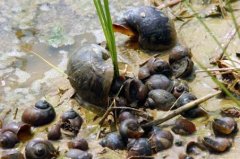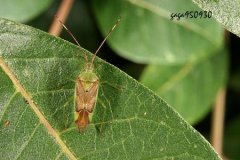Yellow-striped leaf flea: ecology and control of yellow-striped leaf flea, harm of yellow-striped leaf flea
Peasants are familiar with it, but they do not know its ecology and life history, because its adults live on the leaves of the ground, eggs, larvae and pupae live in the soil, general farmers only control adults and ignore the larvae and pupae in the soil. The ecology and control of yellow leaf flea, how to do it?
The density of insect population in spring and summer is often high, and facilities cultivation is more difficult to avoid. The population of cruciferous vegetables can be reduced by avoiding continuous cropping, changing farming methods, field management and field hygiene, soaking, deep ploughing or insolation before planting to kill eggs, larvae and pupae, fencing to prevent invasion of alien insects, planting in holes or trapping adults with yellow sticky plates.
The yellow leaf flea is a small beetle of Coleoptera, rich in black luster. It is named because there is a slightly wavy golden vertical line in the center of the two wings. It jumps like a flea. Generally, farmers refer to it as "jumping". It is the most important pest of cruciferous vegetables cultivated in facilities or organic cultivation during high temperature period. Serious damage often leads to waste cultivation and loss of blood. The economic value of summer vegetables is high, and the control of yellow stripe leaf flea is often the key to the success or failure of cultivation.

taxonomic status
Coleoptera:(Coleoptera)
Chrysomelidae (Chrysomelidae)
Scientific name:(Phyllotreta striolata(Fabricius))
English Name: Stripped flea beetle, turnip flea beetle
Common name: vegetable jump, vegetable turtle, yellow turtle, flea, leaf flea or hard shell turtle.
morphology
Adult:
The insect body is small and the wing sheath has black luster. Each of the two wing sheaths has a slightly wavy golden yellow longitudinal pattern. The hind leg section is especially expanded. It jumps and migrates like a flea and is called a yellow leaf flea. The length is 2.4 - 2.7 mm.
Egg:
Oval, pale yellow. About 0.5 mm long.
Larvae:
The body is slender, white or light yellow, the head is black and brown, the body surface is fine hair, there are three pairs of chest feet and a pair of tiny tail feet, the body length is about 4.0~5.1 mm.
occurrence period
1. Cruciferae is an important pest in spring and summer of this province, and its density is higher when drought or no water irrigation occurs.
2. Protected cultivation areas may occur all year round and cause harm, so attention must be paid to timely prevention and control.
living habits
Adults nibble leaves, usually from the upper epidermis nibble and residue under the epidermis, occasionally from the lower epidermis nibble, damaged leaves initially showed a bit of food marks, grow up into a large insect hole and lose commodity value. Insect damage at seedling stage affects plant development, and high insect population density and serious damage often lead to waste cultivation.
The eggs are laid in the rhizosphere or soil near the roots of the plant, the grains are scattered, and the larvae after hatching have soil habitability, and they dive into the soil to nibble on the roots, resulting in poor growth of the plant or loss of commercial value. The mature larvae pupate in the soil, and after feathering, the adults climb out of the ground and harm the aboveground parts to continue their reproduction.
life history
1. Eggs: 6.0 - 7.1 days in winter and 3.0 - 4.3 days in summer.
2. Larval stage: 20.4 days in winter and 10.5 days in summer.
3. Pupa stage: 9.8 days in winter and 4.0 days in summer.
4. A generation is completed: 66.9 days in winter and 32.9 days in summer.
5. Adult life span: about 50~60 days in winter, about 20~30 days in summer.
6. Number of eggs laid: Each female can lay 10 to 700 eggs, with an average of about 18 eggs.
Host plants: harmful cruciferous vegetables, such as radish, cabbage, sweet basket, cauliflower, mustard, cabbage mustard and cabbage, etc.
hazard state
Different crop types have different harm patterns, such as radish leaves damaged by adults appear dotted food marks, leaves cork, adults lay eggs in or around the roots, eggs hatched larvae dive into the soil damage root cortex, resulting in concave food marks, affecting its appearance or even no commercial value. The food mark is often invaded by pathogenic bacteria and caused soft rot or black rot, which seriously affects the yield and quality. Chinese cabbage seedlings are gnawed out and lead to waste cultivation, or the wormhole damaged in the heart tip of the seedling expands with the growth of the plant and loses its commercial value. The leaves and flesh of cabbage were gnawed away, and the plant was soft and spongy, which seriously affected the growth of the plant. Cabbage, cabbage and cabbage mustard were seriously damaged in seedling stage and later growth stage. Adults liked to swarm on the heart tip and the shady back of the leaf near the soil surface or move between the gaps where the two leaves overlapped and could not be illuminated by sunlight. The leaves with thick mesophyll such as cabbage were often damaged by the upper epidermis but the lower epidermis remained.
control methods
1. Change of cultivation: Cruciferae vegetables should not be continuously planted in seriously endangered areas, and non-Cruciferae vegetables such as amaranth and spinach can be planted instead.
2. Before planting, the whole garden is submerged, drowning eggs, larvae and pupae of soil, or deep ploughing, ploughing and insolation. Remnant plants must be cleared in continuous cropping area or damage area, and irrigation after ploughing in time has better control effect.
3. Yellow sticky boards were used to trap adults to reduce field density, and the boards should be laid flat.
4. The adults are good at jumping and migrating. The facilities should be enclosed. Fine plastic nets or plastic boards (50 cm high) should be used to prevent the invasion of adults.
5. Pay attention to pastoral hygiene, remove residual plants, weeds and other hosts.
- Prev

Harm of Oncomelania hupensis: is Oncomelania hupensis a pest? How to destroy the eggs of Fushu snail?
The snail often appears in the rice field, but the snail is a disease and insect, it can harm the growth of rice, so how do you control it? If you want to know more scientific prevention and treatment methods, let's take a look at them. Due to the rapid reproduction rate of Oncomelania hupensis in Taiwan
- Next

Blind Toona sinensis: the occurrence of blind Toona sinensis on crops and the control of bamboo blind stink weevil
Bamboo blind stink bugs, you must know this kind of pest. Then how to prevent it and eliminate its harm to agriculture? Let's take a look at it. At present, pesticide control can still effectively control bamboo blind stink bugs, but it is not suitable for pesticide control during the continuous bamboo shoot picking period (April-October).
Related
- A one-day flower show brings 130 million yuan in orders! Nanhai, this Phalaenopsis exhibition is amazing
- What do the flower language and meaning of Lutheran tree mean? Precautions for planting Lutheran tree
- Encounter Chaoshan Kongfu tea, not without this cup of Phoenix single clump
- The durian market in Vietnam and Thailand is flooded. The price of imported durian has plummeted by 30-40% in a month.
- Shanghai solved the problem of local vegetable supply by planting 80,000 mu of green leafy vegetables.
- Wageningen University has become the best agricultural university in the world for the seventh time in a row.
- The strongest export season of South African grapes is full of challenges, with exports to Russia falling sharply by 21%.
- Sri Lanka is on the verge of bankruptcy, "Tea for debt" Organic Agriculture Revolution aggravates the Food crisis?
- Turning waste into earthworm manure and worm manure into organic fertilizer-A new choice for auxiliary farming
- Organic rice growers shoulder the responsibility of nurturing agricultural talents! Yinchuan Sustainable Farm with Organic Life Camp

